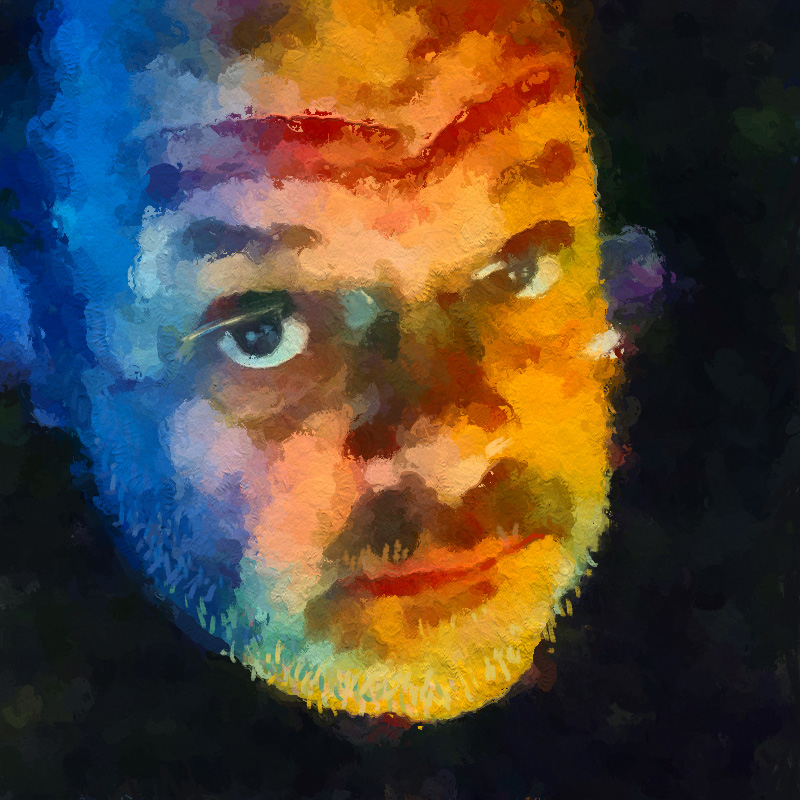ASK & DISCUSS
INDEXWhich magazines or blogs are a good place to start learning animation?
12 years, 1 month ago - Richard Cook
Hi everyone,
Really open question but I was thinking about
Trying to learn some basic animation in my spare time but I don't know where to start.
Does anyone know of any magazines, blogs or tutorials that anyone could recommend please.
I was going to just google it but I thought I'd ask here first just incase someone know of any.
Thanks for taking time to read this!
Any information would honestly be really appreciated!
Best Wishes,
Richard
Only members can post or respond to topics. LOGIN
Not a member of SP? JOIN or FIND OUT MORE
12 years, 1 month ago - Deborah white
Hi,
What type of animation? Character animation, motion graphics or vfx?
If you are after vfx, have a look at video copilet. But it is on After Effects and the industry standard for feature film is Nuke, but the principles are the same. I love this website...it's what got me started in animation.
Or I would recommend Digital Tutors. It's a subscription website, but worth the money.
Good Luck.
Deborah
12 years, 1 month ago - Richard Cook
Hi Paddy,
That sounds interesting, what software do you use then to edit that together?
Also I am guessing you would need a lot of room to set up and dress a set and light it.
I love clay animations, but they seem like they need a lot of physical materials that I can't really afford at the moment.
I would definitely think about creating a short film when I have more room and money to spend.
I would be interested in reading any information that you may know of, being a blog that you read, or a book that you could recommend.
It can't hurt, and like you said it will teach me a lot more of the basic's of animation. :)
Thanks for your help & advice!
Best,
Richard
12 years, 1 month ago - Richard Cook
Hi John,
Thanks for the heads up! I'll have a look now and hopefully get a hold of a few.
Got to start somewhere right!
Thanks again for your advice!
Best,
Richard
12 years, 1 month ago - John David Clay
Richard,
You could start with the 3D artist / maya / computer design magazines available in WHsmithes there are about 5/6 different ones all similar could be useful if you are looking for the basics of animation. there are also many utube tutorials on aftereffects and animational software like that.
Hope this is useful and best of Luck.
John
12 years, 1 month ago - Richard Cook
Hi all thanks for the responses and sorry about the late reply.
Hi Paddy,
Thats pretty cool idea to do a proposal video via stop motion. I will defiantly give it ago. If I am going to understand animation I guess I am going to have to at least try out or research all the main types of animation. Thank you for your help and advice!
Hi Mario,
Thank you for your advice, would you recommend buying 'The Animator's Survival Kit' book or dvd's? I don't mind getting either, I just wanted to know which one you would recommend personally. Also by any chance is there other books or information that you would recommend me getting to start off with? Thanks again Mario for your advice!
Hi Simon,
Would you recommend maybe getting a video of say an animal and go through it frame by frame to sketch whats happening? I'll definitely give it ago anyway, so thanks again for your help!
P.s. I'll definitely have a look at 'Synfig'.
Thank you for all your help everyone!
I'll definitely give it a go, whats the worst that can happen right! :/ Ha ha.
Anyway thanks again!
Really appreciate all your advice, I wouldn't know where to start :)
Best,
Richard
12 years, 1 month ago - Richard Cook
Hi Deborah,
Thank you so much for the advice.
I kind of wanted to learn VFX and Character animation rather than Motion Graphics.
Not sure if thats too much to look into but I thought i'd give it a try.
I will definitely look at the digital tutors website, I think if I am paying for something, it might push me to do more.
Have you used it for a long time?
Anyway thank you again for you help! :)
I really appreciate your advice
Best,
Richard.
12 years, 1 month ago - Paddy Robinson-Griffin
I'd not rule out doing some claymation with a webcam. It'll teach you far more about moving characters, framing shots, timing etc than you can get from any magazine, and the cost of entry is cheap. Also, CGI used to be 'wow', now it isn't. Watch any transformers film and what you're seeing is incredible, technically. But that doesn't mean a good film, just a flashy one. A good claymation/animated Lego sequence can have a load more engagement and entertainment!
12 years, 1 month ago - Richard Cook
Hi Ceiren,
Thank you for replying! It good to see that a few people are saying the same thing.
I'll definitely start with the basics, instead of what I was going to do before which was start with the software and work my way from there, which looking back was quite stupid of me! Ha ha
Thank you though!
If you have any other advice or information, Just send them my way! haha
I am grateful for any advice given as I don't anything regarding animation!
Best,
Richard
12 years, 1 month ago - Paddy Robinson-Griffin
Hiya, plasticine £1, webcam £20, few square feet and a couple of desklamps. Up to you how much space it takes or doesn't! You can use the corner of a bookshelf as a set, or paint a matte in an hour, or make an infinity curve from a piece of A3. Best thing is you can get results the same day you start, so don't lose heart when you come face to face with the reality of trying to create a model from primitives in Blender, then texture, light and animate them...
You can use any camera (locked down so it doesn't move) including a webcam or DSLR. You can even edit the film in windows movie maker by importing the still images and making their length maybe .125 seconds to give you 8 frames/second.
If you enjoy the results, software like istopmotion or stop motion pro might give you more options and tools for longer productions, but you're still building on the basics of take a photo, move the object a bit, and repeat.
Search for 'stop motion' (as claymation is just a subset of that using clay, you can use Lego/anything of course) and there should be enough tutorials to get you up and running. And it can be dirt cheap with same day results, massive plus! A friend did a stop motion proposal video over a weekend, Lego characters, they all danced to the couples song and told the basic story of their meeting. Couple of minutes long, and worked really well.
12 years, 1 month ago - Ceiren Bell
I teach stop motion at Goldsmiths - was going to reply but Mario and Simon have said it already! If you really want to understand what animation is and what it does, stop motion is the best way to start. What you learn about movement and pacing is applicable to all forms of animation.
12 years, 1 month ago - Simon Clarke
I would echo the reply from Mario - the Richard Williams book is a worthwhile investment as are the DVDs but they are pricey!
Best advice I believe is just to do it - get your hands dirty and experiment and then start looking at books like 'The Animators Survival Kit' or the Preston Blair book on animation. Both of these are 2D animation reference but the principles still hold true. If you start by diving and trying things - going with your guts to begin with - then animation will make more of an instinctual sense as you work things out. Then when you start looking at reference, phrases such as 'squash and stretch', 'break down', 'slow in', 'slow out' and so on will make much more sense.
Also agree with the sketching thing, and certainly observing from life. If you want to animate a horse's walk cycle then look at a horse. My personal opinion is that looking at existing animation is fab and inspirational but don't use it as reference, go to the source! Most animation nowadays is very standard, stock kind of stuff and very formulaic - go to the source.
In terms of doing it, have a Google around for 3d software that has learning versions - Houdini is really good for this, Autodesk are sadly and notably intransigent about this but you could at least get a months trial for Softimage or Maya. Blender is getting better all the time and is free and open sourced! Alternatively go old school and get a peg bar and some animation paper and shoot your drawings with a cheap digital camera and put them together on a lap top. If you can't run to a box of paper then get lightweight A4 and punch with a hole punch and make your own peg bar and light box.
There is a free digital 2D program called 'Synfig' you could have a look at.
In any event, look, observe and have a go....
//Simon
12 years, 1 month ago - Mario Cavalli
Hi Richard,
Whatever medium you are interested in, whether it be 2D, 3D, stop motion or pixellation, I would strongly suggest taking up sketching from life, as way of training your eye to observe motion. Don't worry about the quality of the drawing (no one needs to see them), just try to capture the essence of movement. Also, use a stop watch or count off seconds in your head. It takes about a second to say 'one second' or 'one elephant'. One second of film is 24 frames, so if you break it down into separate syllables: 'one-ele-phant' say, each syllable lasts about 8 frames. In a normal brisk human walk, each footfall comes at about every 8 frames. For a slower walk, a march for instance, footfalls come at about 12 frames. Everything builds from this.
Now, once you've got all this going on, get hold of a copy of my old boss, Richard Williams's 'The Animator's Survival Kit', in either book, DVD or app form. That will teach you the principles of everything you need to know, whatever medium you eventually settle on. Try a few tests using flip-books, which you can make from cheap scribble pads available in most stationers. Start drawing from the bottom-most page -- it flips more naturally and you can see the drawing underneath with each subsequent drawing ('onion-skinning', as it is referred to nowadays). Try animating a bouncing ball with squash and stretch: try stick-man walks at different speeds; animate a stick-man lifting a heavy weight and so on. You'll be animating in no time and then be able to apply what you've learned to 3D or stop motion or any other form.
Cheers,
Mario






